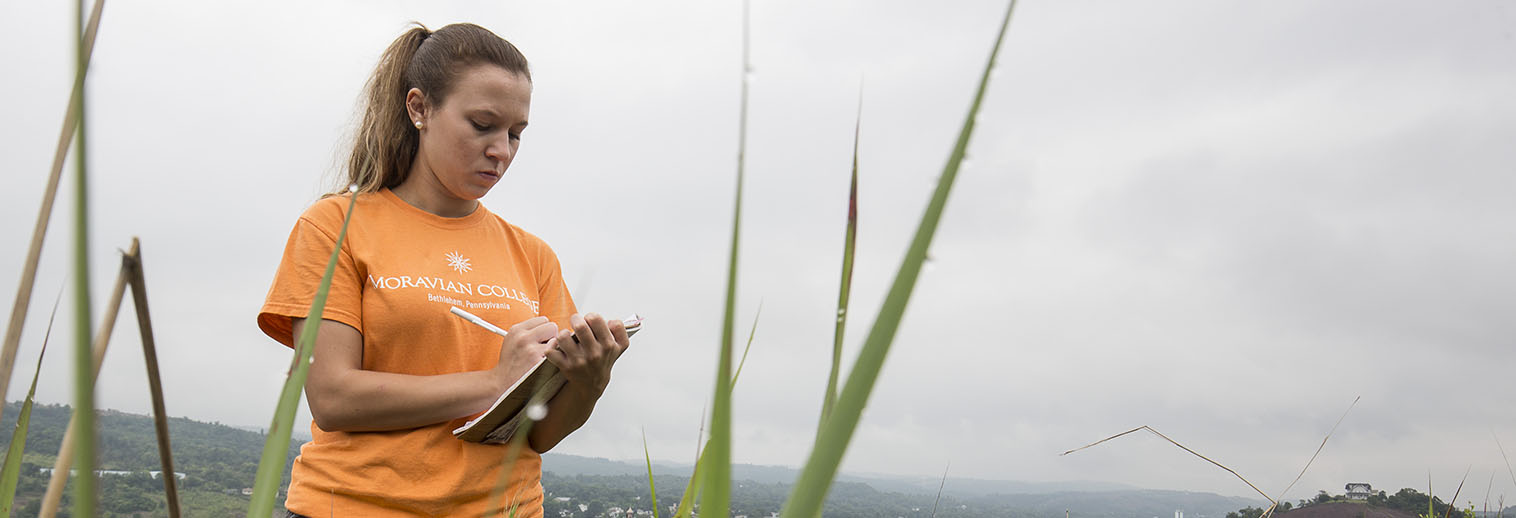SOAR Spotlight: Brittany Spinosa-Weber '16
Succession Monitoring in Prescribed-burn and Control Plots at a Portion of the Restoration Area of the Palmerton Superfund Site
Major: Biology
Hometown: Allentown, PA
Advisor: Diane Husic
Briefly describe your project.
The Palmerton Superfund site, which is the largest contaminated site on the National Priorities List east of the Mississippi River, is being monitored for ongoing risks associated with the toxic heavy metals that remain in the soil as a result of the zinc smelting operations that occurred in the area. I continued this monitoring by using various methods to determine which species in the area were dying, thriving, benefiting, or hurting the ecosystem.
Why did you decide to turn your idea into a SOAR project?
Dr. Husic has been conducting ongoing research at the superfund site and I was interested in being a part of environmental studies, so I approached her to take me on as a SOAR student.
How did your faculty advisor guide you through your research?
She is extremely knowledgeable of the history of the superfund site, the names of the plants, and the monitoring that has been done. She also provided us with many connections to professionals in the field and made it easy to understand the importance of the research.
What was your biggest obstacle?
The hardest part about this project was learning what the different plant species look like, as I had very little knowledge of identification of plants prior to this project.
What has been your biggest takeaway from this experience?
I learned how to identify many different plants and what it is to do field work, because it is very different from working in a lab. I am glad that I gained exposure to this type of research.
What was the result of your project? Was it congruent with your hypothesis?
My project was not meant to have a specific result, as it is a long-term study in order to assess the changes of the ecosystem over many years. However, I did find that there are many birch saplings growing within the burn site, indicating that the prescribed burn may not have been effective and other methods should be explored, especially ones that are less expensive.
Will you expand on your research after this summer is over? If so, where would you like to see it go?
I am actually interested in going to dental school. Environmental research was something that I wanted to learn more about. If I don’t make it to dental school I would definitely be interested in pursuing an environmental career and perhaps continue research at the superfund site.

